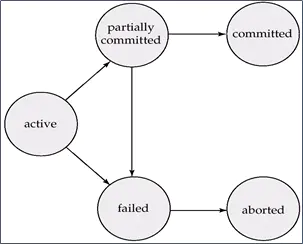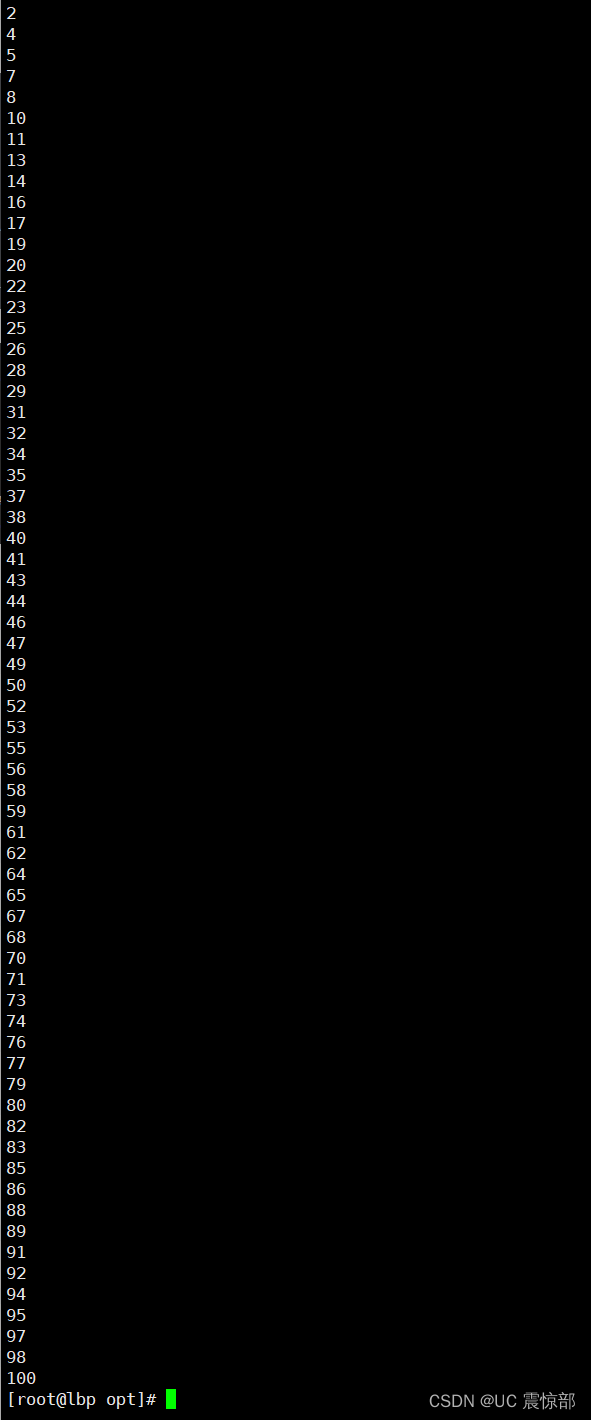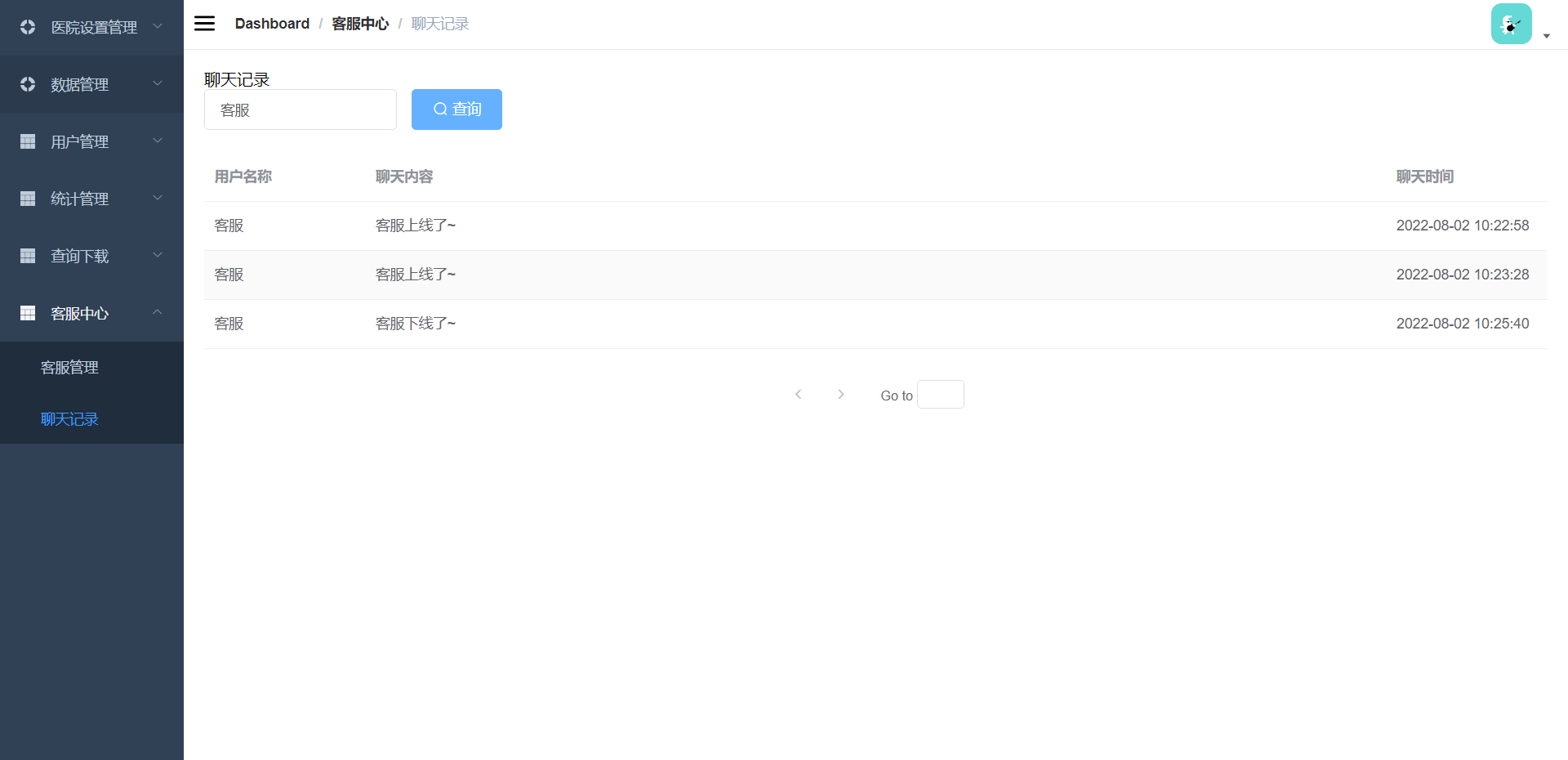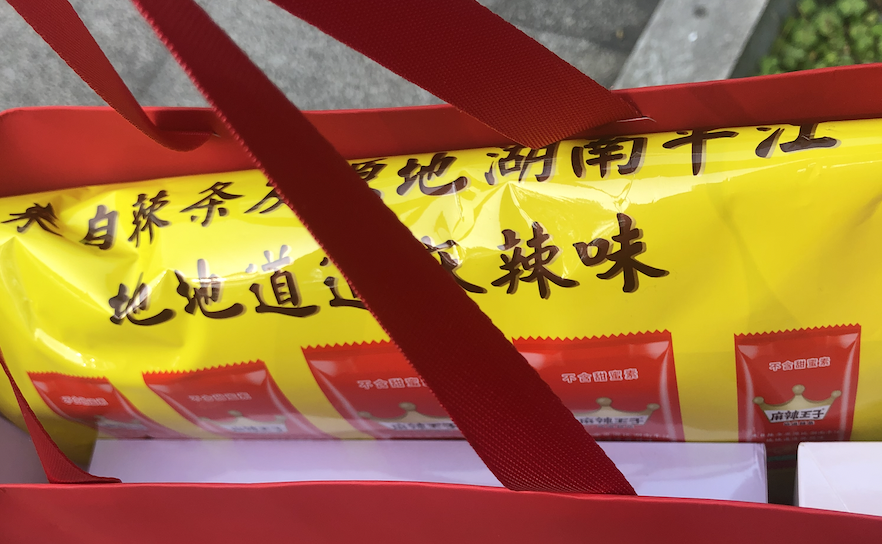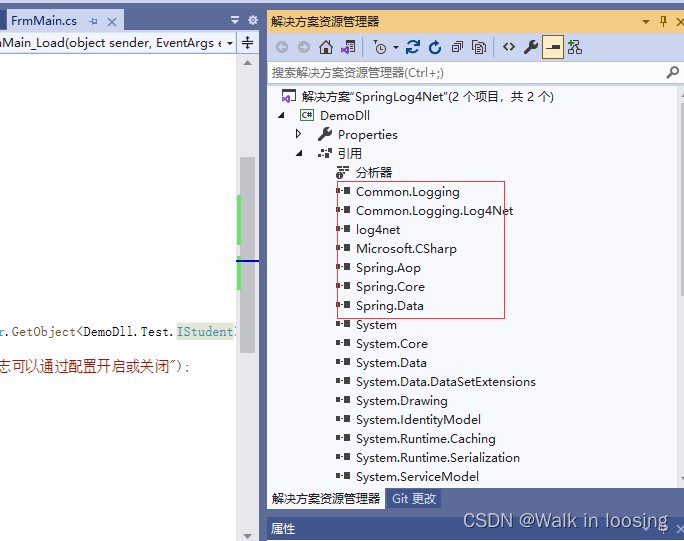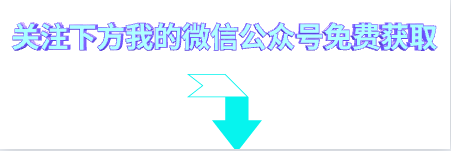当前位置:网站首页>bytebuffer put flip compact clear 方法演示
bytebuffer put flip compact clear 方法演示
2022-08-05 03:53:00 【java持续实践】
工具类
如下的类为打印bytebuffer相关数据的工具类
package cn.itcast.netty.c1;
import io.netty.util.internal.StringUtil;
import java.nio.ByteBuffer;
import static io.netty.util.internal.MathUtil.isOutOfBounds;
import static io.netty.util.internal.StringUtil.NEWLINE;
public class ByteBufferUtil {
private static final char[] BYTE2CHAR = new char[256];
private static final char[] HEXDUMP_TABLE = new char[256 * 4];
private static final String[] HEXPADDING = new String[16];
private static final String[] HEXDUMP_ROWPREFIXES = new String[65536 >>> 4];
private static final String[] BYTE2HEX = new String[256];
private static final String[] BYTEPADDING = new String[16];
static {
final char[] DIGITS = "0123456789abcdef".toCharArray();
for (int i = 0; i < 256; i++) {
HEXDUMP_TABLE[i << 1] = DIGITS[i >>> 4 & 0x0F];
HEXDUMP_TABLE[(i << 1) + 1] = DIGITS[i & 0x0F];
}
int i;
// Generate the lookup table for hex dump paddings
for (i = 0; i < HEXPADDING.length; i++) {
int padding = HEXPADDING.length - i;
StringBuilder buf = new StringBuilder(padding * 3);
for (int j = 0; j < padding; j++) {
buf.append(" ");
}
HEXPADDING[i] = buf.toString();
}
// Generate the lookup table for the start-offset header in each row (up to 64KiB).
for (i = 0; i < HEXDUMP_ROWPREFIXES.length; i++) {
StringBuilder buf = new StringBuilder(12);
buf.append(NEWLINE);
buf.append(Long.toHexString(i << 4 & 0xFFFFFFFFL | 0x100000000L));
buf.setCharAt(buf.length() - 9, '|');
buf.append('|');
HEXDUMP_ROWPREFIXES[i] = buf.toString();
}
// Generate the lookup table for byte-to-hex-dump conversion
for (i = 0; i < BYTE2HEX.length; i++) {
BYTE2HEX[i] = ' ' + StringUtil.byteToHexStringPadded(i);
}
// Generate the lookup table for byte dump paddings
for (i = 0; i < BYTEPADDING.length; i++) {
int padding = BYTEPADDING.length - i;
StringBuilder buf = new StringBuilder(padding);
for (int j = 0; j < padding; j++) {
buf.append(' ');
}
BYTEPADDING[i] = buf.toString();
}
// Generate the lookup table for byte-to-char conversion
for (i = 0; i < BYTE2CHAR.length; i++) {
if (i <= 0x1f || i >= 0x7f) {
BYTE2CHAR[i] = '.';
} else {
BYTE2CHAR[i] = (char) i;
}
}
}
/** * 打印所有内容 * @param buffer */
public static void debugAll(ByteBuffer buffer) {
int oldlimit = buffer.limit();
buffer.limit(buffer.capacity());
StringBuilder origin = new StringBuilder(256);
appendPrettyHexDump(origin, buffer, 0, buffer.capacity());
System.out.println("+--------+-------------------- all ------------------------+----------------+");
System.out.printf("position: [%d], limit: [%d]\n", buffer.position(), oldlimit);
System.out.println(origin);
buffer.limit(oldlimit);
}
/** * 打印可读取内容 * @param buffer */
public static void debugRead(ByteBuffer buffer) {
StringBuilder builder = new StringBuilder(256);
appendPrettyHexDump(builder, buffer, buffer.position(), buffer.limit() - buffer.position());
System.out.println("+--------+-------------------- read -----------------------+----------------+");
System.out.printf("position: [%d], limit: [%d]\n", buffer.position(), buffer.limit());
System.out.println(builder);
}
public static void main(String[] args) {
ByteBuffer buffer = ByteBuffer.allocate(10);
buffer.put(new byte[]{
97, 98, 99, 100});
debugAll(buffer);
}
private static void appendPrettyHexDump(StringBuilder dump, ByteBuffer buf, int offset, int length) {
if (isOutOfBounds(offset, length, buf.capacity())) {
throw new IndexOutOfBoundsException(
"expected: " + "0 <= offset(" + offset + ") <= offset + length(" + length
+ ") <= " + "buf.capacity(" + buf.capacity() + ')');
}
if (length == 0) {
return;
}
dump.append(
" +-------------------------------------------------+" +
NEWLINE + " | 0 1 2 3 4 5 6 7 8 9 a b c d e f |" +
NEWLINE + "+--------+-------------------------------------------------+----------------+");
final int startIndex = offset;
final int fullRows = length >>> 4;
final int remainder = length & 0xF;
// Dump the rows which have 16 bytes.
for (int row = 0; row < fullRows; row++) {
int rowStartIndex = (row << 4) + startIndex;
// Per-row prefix.
appendHexDumpRowPrefix(dump, row, rowStartIndex);
// Hex dump
int rowEndIndex = rowStartIndex + 16;
for (int j = rowStartIndex; j < rowEndIndex; j++) {
dump.append(BYTE2HEX[getUnsignedByte(buf, j)]);
}
dump.append(" |");
// ASCII dump
for (int j = rowStartIndex; j < rowEndIndex; j++) {
dump.append(BYTE2CHAR[getUnsignedByte(buf, j)]);
}
dump.append('|');
}
// Dump the last row which has less than 16 bytes.
if (remainder != 0) {
int rowStartIndex = (fullRows << 4) + startIndex;
appendHexDumpRowPrefix(dump, fullRows, rowStartIndex);
// Hex dump
int rowEndIndex = rowStartIndex + remainder;
for (int j = rowStartIndex; j < rowEndIndex; j++) {
dump.append(BYTE2HEX[getUnsignedByte(buf, j)]);
}
dump.append(HEXPADDING[remainder]);
dump.append(" |");
// Ascii dump
for (int j = rowStartIndex; j < rowEndIndex; j++) {
dump.append(BYTE2CHAR[getUnsignedByte(buf, j)]);
}
dump.append(BYTEPADDING[remainder]);
dump.append('|');
}
dump.append(NEWLINE +
"+--------+-------------------------------------------------+----------------+");
}
private static void appendHexDumpRowPrefix(StringBuilder dump, int row, int rowStartIndex) {
if (row < HEXDUMP_ROWPREFIXES.length) {
dump.append(HEXDUMP_ROWPREFIXES[row]);
} else {
dump.append(NEWLINE);
dump.append(Long.toHexString(rowStartIndex & 0xFFFFFFFFL | 0x100000000L));
dump.setCharAt(dump.length() - 9, '|');
dump.append('|');
}
}
public static short getUnsignedByte(ByteBuffer buffer, int index) {
return (short) (buffer.get(index) & 0xFF);
}
}
put 方法演示
public class TestByteBufferReadWrite {
public static void main(String[] args) {
ByteBuffer buffer = ByteBuffer.allocate(10);
buffer.put((byte) 0x61);
debugAll(buffer);
}
}
打印如下, postion 位置为1, 有一个数据为61, 10进制是a
+--------+-------------------- all ------------------------+----------------+
position: [1], limit: [10]
+-------------------------------------------------+
| 0 1 2 3 4 5 6 7 8 9 a b c d e f |
+--------+-------------------------------------------------+----------------+
|00000000| 61 00 00 00 00 00 00 00 00 00 |a......... |
+--------+-------------------------------------------------+----------------+
存放入数组
public class TestByteBufferReadWrite {
public static void main(String[] args) {
ByteBuffer buffer = ByteBuffer.allocate(10);
buffer.put((byte) 0x61);
debugAll(buffer);
buffer.put(new byte[]{
0x62, 0x63, 0x64});
debugAll(buffer);
}
}
控制台打印如下 : 存放了四个数据, position为4
+--------+-------------------- all ------------------------+----------------+
position: [1], limit: [10]
+-------------------------------------------------+
| 0 1 2 3 4 5 6 7 8 9 a b c d e f |
+--------+-------------------------------------------------+----------------+
|00000000| 61 00 00 00 00 00 00 00 00 00 |a......... |
+--------+-------------------------------------------------+----------------+
+--------+-------------------- all ------------------------+----------------+
position: [4], limit: [10]
+-------------------------------------------------+
| 0 1 2 3 4 5 6 7 8 9 a b c d e f |
+--------+-------------------------------------------------+----------------+
|00000000| 61 62 63 64 00 00 00 00 00 00 |abcd...... |
+--------+-------------------------------------------------+----------------+
flip get 方法演示
public static void main(String[] args) {
ByteBuffer buffer = ByteBuffer.allocate(10);
buffer.put((byte) 0x61);
debugAll(buffer);
//
buffer.put(new byte[]{
0x62, 0x63, 0x64});
debugAll(buffer);
进入读模式
buffer.flip();
System.out.println(buffer.get());
debugAll(buffer);
}
调用flip后, 进入读模式, 可以看到打印了97, position 在下标为1的位置.
+--------+-------------------- all ------------------------+----------------+
position: [1], limit: [10]
+-------------------------------------------------+
| 0 1 2 3 4 5 6 7 8 9 a b c d e f |
+--------+-------------------------------------------------+----------------+
|00000000| 61 00 00 00 00 00 00 00 00 00 |a......... |
+--------+-------------------------------------------------+----------------+
+--------+-------------------- all ------------------------+----------------+
position: [4], limit: [10]
+-------------------------------------------------+
| 0 1 2 3 4 5 6 7 8 9 a b c d e f |
+--------+-------------------------------------------------+----------------+
|00000000| 61 62 63 64 00 00 00 00 00 00 |abcd...... |
+--------+-------------------------------------------------+----------------+
97
+--------+-------------------- all ------------------------+----------------+
position: [1], limit: [4]
+-------------------------------------------------+
| 0 1 2 3 4 5 6 7 8 9 a b c d e f |
+--------+-------------------------------------------------+----------------+
|00000000| 61 62 63 64 00 00 00 00 00 00 |abcd...... |
+--------+-------------------------------------------------+----------------+
compact 方法演示
compact 方法用于未读取完数据时, 写入数据, 例如上一步, 里面有四个数据, 只读取了一个数据61, 调用compact 方法进入 写模式, 可以保证, 未读取完的数据, 不会丢失.
public static void main(String[] args) {
ByteBuffer buffer = ByteBuffer.allocate(10);
buffer.put((byte) 0x61);
debugAll(buffer);
//
buffer.put(new byte[]{
0x62, 0x63, 0x64});
debugAll(buffer);
//
进入读模式
buffer.flip();
System.out.println(buffer.get());
debugAll(buffer);
buffer.compact();
debugAll(buffer);
buffer.put(new byte[]{
0x65, 0x66});
debugAll(buffer);
}
控制台打印如下, 只截取了最后两次的打印, 可以看到是从position3的位置开始写入, 保留了之前没有读取的数据(62, 63, 64)
+--------+-------------------- all ------------------------+----------------+
position: [3], limit: [10]
+-------------------------------------------------+
| 0 1 2 3 4 5 6 7 8 9 a b c d e f |
+--------+-------------------------------------------------+----------------+
|00000000| 62 63 64 64 00 00 00 00 00 00 |bcdd...... |
+--------+-------------------------------------------------+----------------+
+--------+-------------------- all ------------------------+----------------+
position: [5], limit: [10]
+-------------------------------------------------+
| 0 1 2 3 4 5 6 7 8 9 a b c d e f |
+--------+-------------------------------------------------+----------------+
|00000000| 62 63 64 65 66 00 00 00 00 00 |bcdef..... |
+--------+-------------------------------------------------+----------------+
如果改成clear写入
buffer.clear();
debugAll(buffer);
buffer.put(new byte[]{
0x65, 0x66});
debugAll(buffer);
控制台打印如下, 可以看到position 从0开始了, 把65, 66 写入到了0 和1的位置, 把原有的61,62覆盖了.
+--------+-------------------- all ------------------------+----------------+
position: [0], limit: [10]
+-------------------------------------------------+
| 0 1 2 3 4 5 6 7 8 9 a b c d e f |
+--------+-------------------------------------------------+----------------+
|00000000| 61 62 63 64 00 00 00 00 00 00 |abcd...... |
+--------+-------------------------------------------------+----------------+
+--------+-------------------- all ------------------------+----------------+
position: [2], limit: [10]
+-------------------------------------------------+
| 0 1 2 3 4 5 6 7 8 9 a b c d e f |
+--------+-------------------------------------------------+----------------+
|00000000| 65 66 63 64 00 00 00 00 00 00 |efcd...... |
+--------+-------------------------------------------------+----------------+
边栏推荐
猜你喜欢
随机推荐
public static <T> List<T> asList(T... a) 原型是怎么回事?
调用阿里云oss和sms服务
token, jwt, oauth2, session parsing
结构体初解
The most effective seven performance testing techniques of software testing techniques
YYGH-13-客服中心
多列属性column元素的可见性:display、visibility、opacity、垂直对齐方式:vertical-align、z-index 越大越显示在上层
Index Mysql in order to optimize paper 02 】 【 10 kinds of circumstances and the principle of failure
数组常用方法总结
【背包九讲——01背包问题】
UE4 通过与其它Actor互动开门
The most comprehensive exam questions for software testing engineers in 2022
[论文笔记] MapReduce: Simplified Data Processing on Large Clusters
【8.4】代码源 - 【数学】【历法】【删库】【不朴素的数列(Bonus)】
presto启动成功后出现2022-08-04T17:50:58.296+0800 ERROR Announcer-3 io.airlift.discovery.client.Announcer
2022.8.4-----leetcode.1403
UE4 通过重叠事件开启门
The second council meeting of the Dragon Lizard Community was successfully held!Director general election, 4 special consultants joined
阿里本地生活单季营收106亿,大文娱营收72亿,菜鸟营收121亿
Why is the pca component not associated
